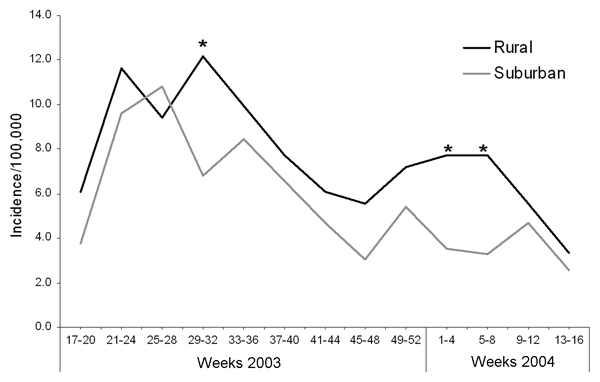Volume 12, Number 10—October 2006
Research
Campylobacter jejuni Multilocus Sequence Types in Humans, Northwest England, 2003–2004
Figure 2

Figure 2. Seasonality of human cases of campylobacteriosis reported in the first 12 months of the study period in patients residing in Fylde and Wyre (rural) and Salford and Trafford (suburban). To allow comparison between the areas, the number of cases reported to the North West Health Protection Agency surveillance system during 4-week intervals were converted to incidence by using estimates of the annual population for each local authority. The periods at which the incidence differed with marginal statistical significance are indicated with an asterisk: weeks 29–32, incidence ratio (IR) 1.79, 95% confidence intervals (CI) 0.98–3.22 (p = 0.05); weeks 1–4, IR 2.20, 95% CI 0.98–4.88 (p = 0.04); weeks 5–8, IR 2.36, 95% CI 1.04–5.33 (p = 0.02).